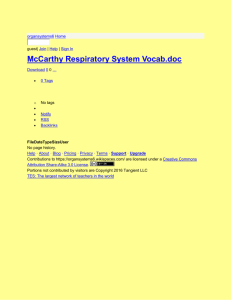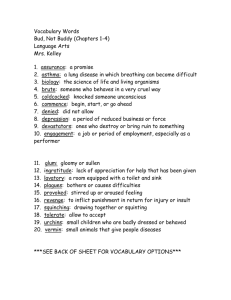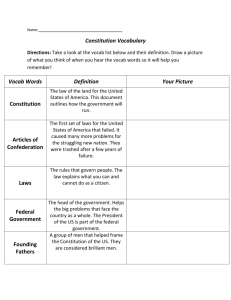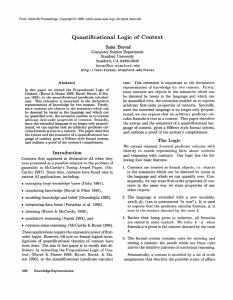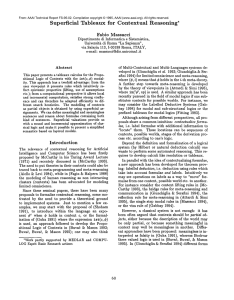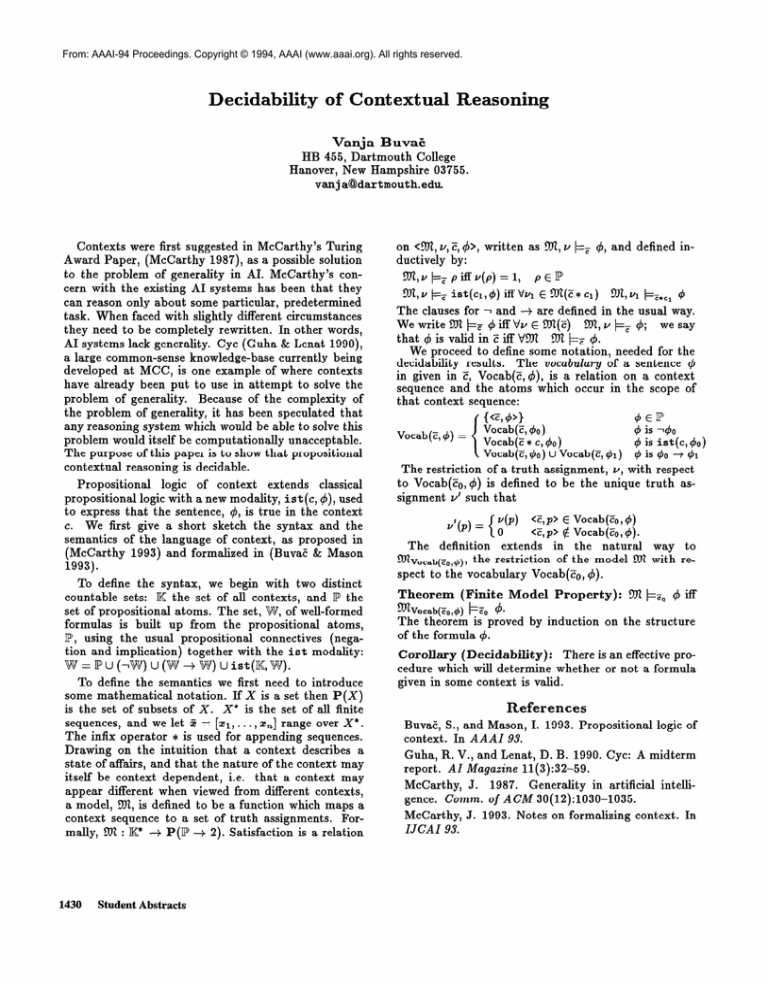
From: AAAI-94 Proceedings. Copyright © 1994, AAAI (www.aaai.org). All rights reserved.
Decidability
of Contextual
Reasoning
Vanja BuvaE
HB 455, Dartmouth College
Hanover, New Hampshire 03755.
vanja@dartmouth.edu.
Contexts were first suggested in McCarthy’s Turing
Award Paper, (McCarthy 1987), as a possible solution
to the problem of generality in AI. McCarthy’s
concern with the existing AI systems has been that they
can reason only about some particular, predetermined
task. When faced with slightly different circumstances
they need to be completely rewritten. In other words,
AI systems lack generality. Cyc (Guha & Lenat 1990),
a large common-sense
knowledge-base
currently being
developed at MCC, is one example of where contexts
have already been put to use in attempt to solve the
Because of the complexity of
problem of generality.
the problem of generality, it has been speculated that
any reasoning system which would be able to solve this
problem would itself be computationally
unacceptable.
The purpose of this paper is to show that propositional
contextual reasoning is decidable.
Propositional
logic of context
extends
classical
propositional logic with a new modality, ist (c, $), used
to express that the sentence, 4, is true in the context
c. We first give a short sketch the syntax and the
semantics of the language of context, as proposed in
(McCarthy
1993) and formalized in (BuvaE & Mason
1993).
To define the syntax, we begin with two distinct
countable sets: K the set of all contexts, and p the
set of propositional
atoms. The set, W, of well-formed
formulas is built up from the propositional
atoms,
IfD, using the usual propositional
connectives
(negation and implication)
together with the ist modality:
W=PU(~W)U(W+W)Uist(IK,W).
To define the semantics we first need to introduce
some mathematical
notation. If X is a set then P(X)
is the set of subsets of X. X” is the set of all finite
sequences, and we let 3 = [%I,. . . , a,] range over X*.
The infix operator * is used for appending sequences.
Drawing on the intuition that a context describes a
state of affairs, and that the nature of the context may
itself be context dependent, i.e. that a context may
appear different when viewed from different contexts,
a model, ZY&is defined to be a function which maps a
context sequence to a set of truth assignments.
Formally, !?R : IK? + P (p + 2). Satisfaction is a relation
1430
Student Abstracts
on <E?R,Y, C, @,
ductively by:
written as %R, ZJb=, 4, and defined in-
The clauses for 1 and --+ are defined in the usual way.
we say
Z?R,u b, 4;
We write m +F d, iff V’v E m(E)
that 4 is valid in ;Eiff V!YlZ tl7l bz 4.
We proceed to define some notation, needed for the
of a sentence 4
decidability
results.
The vocabulary
in given in i!, Vocab(c, +), is a relation on a context
sequence and the atoms which occur in the scope of
that context sequence:
Vocab(E, 4) = t- ~~o~[~‘*‘~)dO)
Vocab(C,
4oj
U Vocab(C, 41)
4 is 140
4 is ist(c,+o)
4 is 4. + 41
The restriction of a truth assignment, v, with respect
to Vocab(Ze,d)
is defined to be the unique truth assignment L’ such that
<;E,p> E Vocab(Eo,4)
<C,p> $ Vocab(Eo, 4).
The definition
extends
in the natural
way to
of the model m with remVocab(&,,+)
9 the restriction
spect to the vocabulary Vocab(Ee, 4).
u’(p) = { ;@)
Theorem
mVocab(E&)
(Finite
k,
Model
Property):
4.
The theorem is proved by induction
of the formula 4.
9Jl b+
4 iff
on the structure
Corollary
(Decidability):
There is an effective procedure which will determine whether or not a formula
given in some context is valid.
References
BuvaE, S., and Mason,
context. In AAAI 93.
I. 1993. Propositional
Guha, R. V., and Lenat, D. B. 1990. Cyc:
report. AI Magazine 11(3):32-59.
McCarthy, J.
gence. Comm.
A midterm
1987. Generality in artificial
of ACM 30(12):1030-1035.
McCarthy, J. 1993. Notes on formalizing
IJCAI 93.
logic of
intelli-
context.
In


